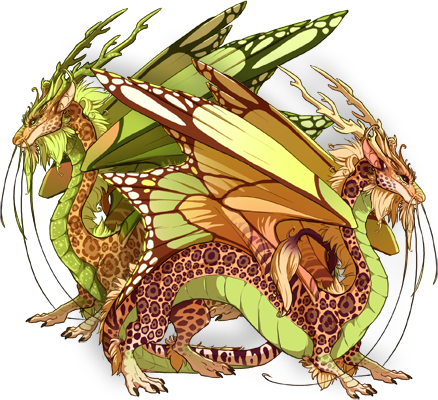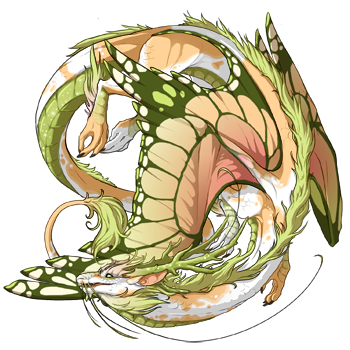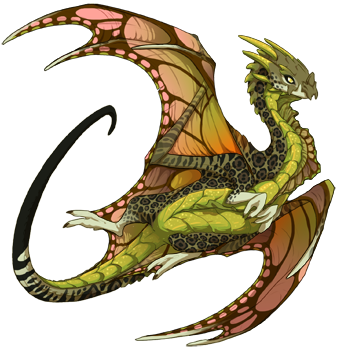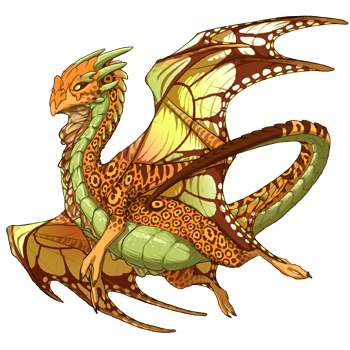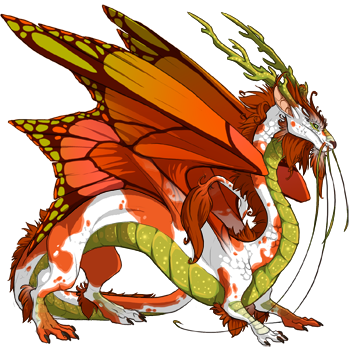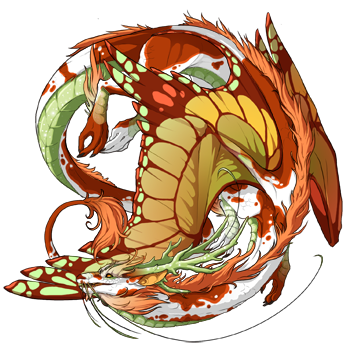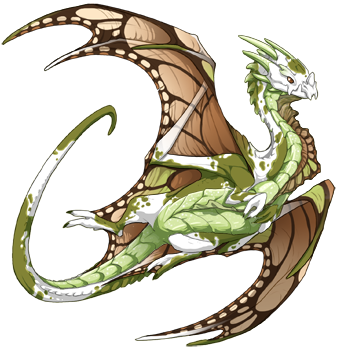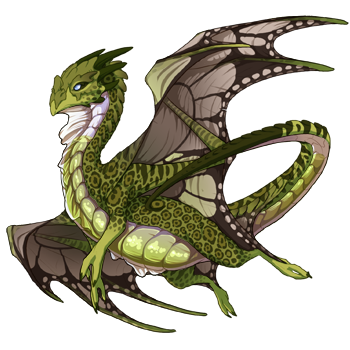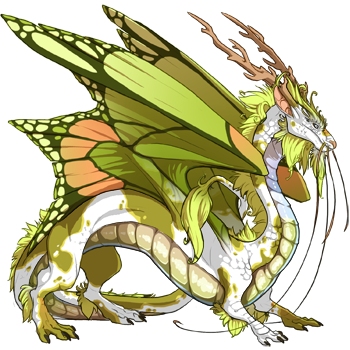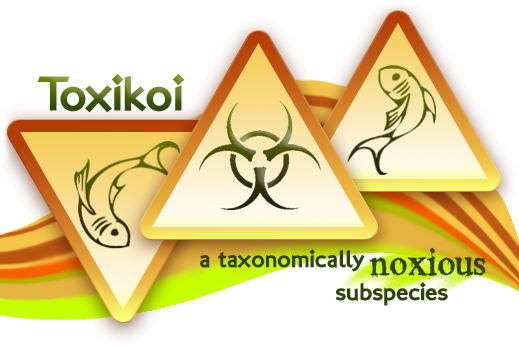
Introduction & Description – Genotypes & Phenotypes – Variations & Mutations –
Specimens for Sale – Type Specimens – Pairs & Breeders – Pinglist – Affiliates
Introduction
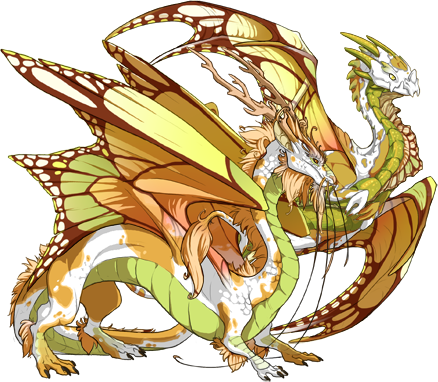
Arising along the shoreline boundary between the Scarred Wasteland and the Sea of a Thousand Currents, a friendly yet hazardous subspecies is now proliferating in wider reaches. Made up of Imperial dragons and Nocturnes, the Toxikoi can be a shimmering addition to any lair, but certain precautions may be recommended for safety's sake.
Toxikoi produce chemicals of varying toxicity, an ability that is entirely passive, without conscious control. These contaminants can have a wide range of effects, depending on the specimen, from oddly enjoyable to suddenly lethal. Beware of waters inhabited by these dragons!
Taxonomic Origins, Definitions, & Description
History
Toxikoi are currently understood to be water-loving Imperials and Nocturnes splashed with oranges and greens, their bright tones perhaps a visual warning of underlying poisonous natures. First observed in the domains of the Plaguebringer and the Tidelord, they now fly and swim in all regions, unrestricted by either fresh- or saltwater.
Although little is recorded of the original deviations, rumors point to Imperials living in a toxic environment while consuming too many brightly colored and sometimes poisonous fish.
Biology
Each Toxikoi is capable of releasing contaminants, the nature of which seem specific to the individual. Some members of the subspecies carry mind-bending hallucinogens. Some toxins are inflammatory, paralytic, hemolytic, phototoxic, or even pleasant and buzzy. Others secrete poisons that are deadly within even minutes of exposure. No known cases are either airborne or venomous; that is, Toxikoi spread their poisons strictly through water or physical contact, not via winds, bites, or stings. (Due to the aquatic contamination created by Toxikoi, Water lairs should exercise precautionary measures before welcoming one of this subspecies, including but not limited to quarantine, filters, and protective gear.)
The toxins created by specimens of this description are disseminated aquatically and absorbed through even the slightest direct contact. This is likely why these dragons spend so much time around and in water. Water that a Toxikoi has spent time in (duration required still under academic review) acquires the same properties, which has been both a benefit and a detriment to some lairs.
Naturally, Toxikoi are immune to their own poisons, but this immunity thus far extends to all toxins. Not only are they invulnerable to any degree of toxicity, foods high in such chemicals are in fact preferred. However, keep Toxikoi away from either natural or created antidotes, as experiencing a weakening of their natural poisons is an unpleasant sensation.
Some individuals bear gills, and they experience tolerance with all ranges of salinity, indicating that the Toxikoi subspecies is euryhaline. Specimens lacking gills have incredible lung capacities, spending inordinate amounts of time underwater, sometimes deliberately depriving their brains of oxygen to experience vivid hallucinations—a favorite pastime.
Habitat & Behavior
Though all are capable of flight ordinarily, overall they vastly prefer to spend their time at or under the water. They are fond of enclosed spaces, caves, and mild currents. Toxikoi Imperials swim with elegant, sinuous motions of their powerful bodies. Toxikoi Nocturnes swim by wrapping their wings around their bodies and plunging torpedo-like through the water, guiding their turns with clever motions of extended wingtips.
Toxikoi that are removed from water eventually appear dull in coloration. They grow listless and speak of a constant thirst, even when provided with plenty to drink. Eventually, their spotted scales thicken like armor, a condition that may be irreversible. Further study is required.
Those Toxikoi who have perished are tended with respect and caution by their remaining brethren, if any, and typically will be placed in underwater cairns. The stones of these cairns do not form a perfect seal, allowing the poisons in their bodies to seep out into gentle currents. It is said that a Toxikoi only truly dies when those lingering chemicals can no longer be detected.





























































